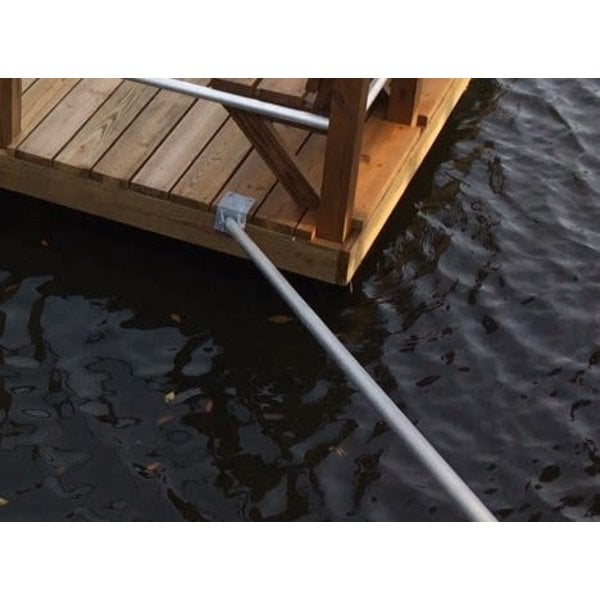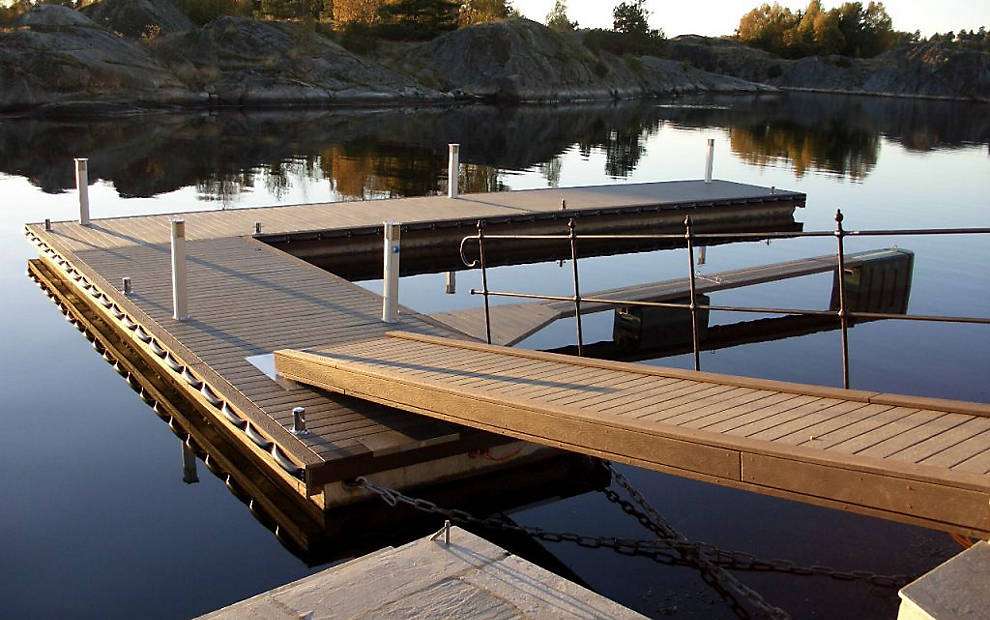Optimizing Your Outdoor Area with Specialized Floating Dock Services
Optimizing Your Outdoor Area with Specialized Floating Dock Services
Blog Article
Develop the Perfect Docking Solution With Floating Docks
Floating docks present a versatile option for a selection of maritime requirements, adapting flawlessly to fluctuating water levels and varied vessel kinds. Their modular nature permits rapid installation and relocation, yet the selection of appropriate materials and style attributes is critical for guaranteeing both capability and aesthetic appeal. As we explore the essential aspects that contribute to the performance of floating docks, several key variables relating to security and maintenance will certainly arise, questioning about just how to maximize your docking experience. The succeeding discussion will certainly light up these essential factors to consider.

Advantages of Floating Docks
Floating docks deal countless advantages that make them a perfect selection for different maritime applications. Unlike fixed docks, floating docks rise and autumn with the trend, guaranteeing consistent access for vessels.
Furthermore, floating docks are typically much easier and quicker to install contrasted to conventional fixed frameworks. Their modular style permits uncomplicated assembly and disassembly, promoting upkeep and relocation when necessary. This flexibility is specifically valuable for temporary applications or in atmospheres where conditions may transform.
Floating docks also tend to be much more eco-friendly, as they minimize disturbance to the seabed and bordering water communities. Their buoyant nature reduces the threat of damages to aquatic life, advertising a much healthier environment. These docks can be customized to fit numerous vessel dimensions, making sure that they satisfy particular functional needs.
Inevitably, the combination of flexibility, simplicity of setup, and environmental considerations makes floating docks a very reliable remedy for a variety of maritime demands.
Choosing the Right Materials
Selecting the ideal materials for floating docks is critical to guarantee stability, longevity, and toughness. The option of materials directly impacts the dock's performance in different environmental conditions, consisting of exposure to water, sunshine, and potential wear from aquatic web traffic.
Common products utilized for floating docks consist of aluminum, wood, and high-density polyethylene (HDPE) Light weight aluminum is lightweight, corrosion-resistant, and requires minimal upkeep, making it an exceptional option for durability. Nonetheless, its first price can be greater compared to other materials.
Wood, while aesthetically enticing and providing a conventional look, can be prone to rot and insect damages otherwise effectively treated. For that reason, utilizing pressure-treated wood or normally sturdy species like cedar or redwood can alleviate these issues.
HDPE is a preferred choice due to its resistance to UV rays and chemicals, in addition to being environmentally friendly. floating dock services. It is available and light-weight in different colors, permitting modification
Inevitably, the right product option will rely on specific demands, consisting of spending plan, preferred appearances, and ecological factors to consider. Mindful evaluation of these variables will certainly cause a resistant and effective floating dock service.
Style Considerations for Security
When designing floating docks, making certain stability is an essential element that can considerably influence their functionality and safety. Stability in floating dock style is affected by different variables, consisting of buoyancy, weight circulation, and the plan of elements.
Weight circulation is critical; equally dispersing tons across the navigate here dock avoids turning and boosts security. This can be accomplished via strategic positioning of docking devices, such as cleats and fenders, as well as proper spacing of drifts. Furthermore, the measurements of the dock need to be attentively intended. Broader layouts can supply boosted stability, specifically in rough water problems, while longer docks may call for extra supports to avoid drooping.
One more crucial consideration is the environmental influence, consisting of wave action and wind. Incorporating functions such as sidewalls or skirting can aid mitigate the impacts of environmental pressures, keeping stability in unfavorable problems. Ultimately, a combination of thoughtful design, material choice, and understanding of environmental elements will generate a floating dock that fulfills both security and safety and security needs.
Installation Tips and Strategies

Next, secure the essential authorizations and comply with regional regulations, which may dictate installation approaches and ecological considerations. If required, engage a certified specialist experienced in floating dock installations. Use premium products made for aquatic environments to boost toughness and durability.
When positioning the dock, straighten it alongside the coastline to help with simple access. Ensure that the anchoring system is durable, employing concrete blocks or helical supports to stabilize the dock against wind and wave action. It's crucial to account for seasonal water level changes, including possible ice motion in chillier environments.
During the installation, ascertain the dock's floatation and stability prior to settling the anchoring. Consistently examine the installment for any kind of indicators of wear or damages. By following these techniques and pointers, you can achieve a secure, functional, and visually pleasing floating dock installment that satisfies your needs.
Maintenance and Treatment Standards
Keeping and caring for floating docks is critical to lengthening their life-span and making sure risk-free usage. Regular inspections need to be carried out to identify any signs of wear, damages, or aquatic development. Seek splits, loose fittings, or discolored areas on the dock's surface, as these issues can endanger architectural integrity.
Cleaning up is vital. Use a stress washer to get website link rid of algae, barnacles, and particles, which can collect in time. For stubborn growth, take into consideration ecologically pleasant cleaning agents that will not damage water life.
Additionally, inspect the mooring lines and supports often to ensure they are free and safe and secure from rust. Replace any kind of torn or damaged lines immediately to preserve stability.
During severe climate, such as tornados or freezing conditions, take precautionary steps. Secure the dock with added mooring lines and, if feasible, eliminate any removable components to stop damage.
Conclusion
In conclusion, the execution of floating docks provides a reliable and functional docking option ideal for numerous maritime applications. With proper setup and routine maintenance, floating docks can give trusted and reliable docking experiences for a broad variety of vessels.
As we explore the essential aspects that contribute to the efficiency of floating docks, several key aspects regarding stability and upkeep will arise, increasing questions concerning exactly how to maximize your docking experience. Unlike repaired docks, floating docks surge and fall with the tide, ensuring constant availability for vessels.When developing floating docks, ensuring stability is a basic aspect that can dramatically influence their performance and safety. Security in floating dock style is influenced by different elements, including buoyancy, weight circulation, and the plan of components. Ultimately, a combination of thoughtful design, product choice, and understanding of ecological aspects will certainly produce a floating dock that meets both security and safety and security requirements.
Report this page